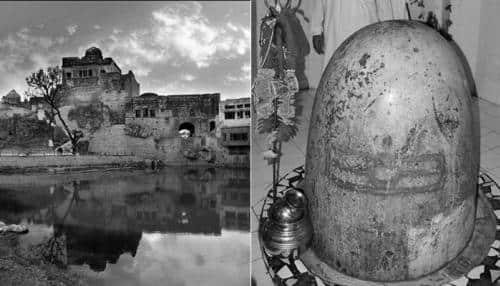- News>
- India
When faith won over `hate of partition`: The story of two Shiva temples in Pakistan

Two famous Shiv temples they are back to being `temples` in Pakistan.
New Delhi: A line was drawn between Attari and Wagah in 1947. Partition not just uprooted people from their homes and farms but also forced Sikhs and Hindus to abandon their places of worship in the Islamic Republic of Pakistan.
In the following decades the population of Hindus and other minorities witnessed a steady decline and with that many famous temples were abandoned or were 'occupied' by others.
But two temples have been resuscitated in recent years. Unwavering faith of devotees and some help from the Pakistani government ensured that they are back to being 'temples' – a no mean feat in an increasingly Islamic Pakistan.
Chitti Gatti Shiva Linga Temple
Situated along the Karakoram Highway, around 10 kilometres from Mansehra, the temple at Chitti Gatti houses the largest Shiv Linga in Pakistan.
Said to be over 2000 years old, the temple was sealed in 1948 by locals, who also occupied the land surrounding the temple. It remained inaccessible to the minuscule Hindu population in the region till 1998 when Hindus reclaimed this important part of their faith and heritage.
The temple has been partially restored and attracts pilgrims from across Pakistan, especially on Maha Shivratri. The restoration was largely driven by Pakistani Hindus, who chipped in with money and labour.
Katas Raj Temple
The magnificent Katas Raj Shiv temple in Chakwal district of Punjab is one of the most important and sacred Hindu sites in Pakistan.
Katas Raj actually comprises seven temples – only three survive today - built around the circumference of a holy pond.
As per the legend associated with the temple, the pond was formed when Lord Shiva shed two tears at the demise of his beloved wife Sati. While one tear drop created the pond at Katas Raj, the other drop fell at Pushkar in Ajmer.
With the departure of the Hindus of north Punjab, Katas Raj turned into an abandoned ruin – its pond filled with garbage.
Hindus of the region finally woke up in 1982 to the need to restore its glory.
The Pakistani government also responded by allowing Indian pilgrims – albeit in small numbers – to visit the temple on Mahashivaratri.
This year the Pakistan government has granted visas to 125 Indian pilgrims to visit Katas Raj.
